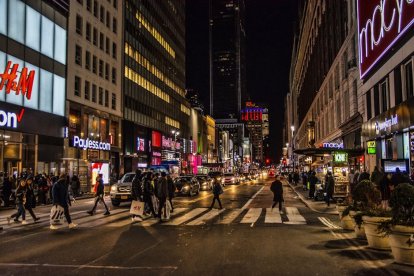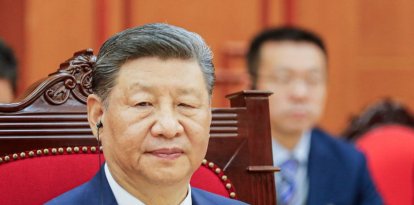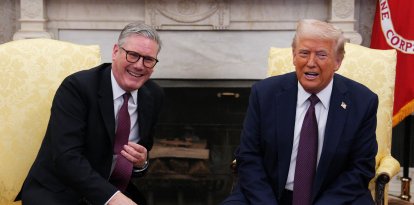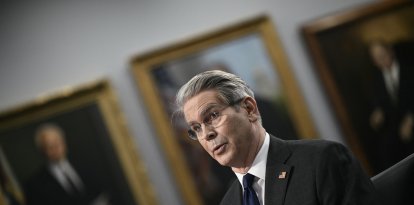New York Fed estimates it will take years to bring inflation back under control
The president of the institution acknowledges: "I do think it’ll take a few years, but we’re going to – we’re going to get that done."

Nueva York / Bruce Emmerling (Pixabay)
High inflation is here to stay, at least for a few years. This is John Williams’ view, president of the New York Federal Reserve, in a conversation with The Wall Street Journal.
Reporter Nick Timiraos asked him about the Fed's projections to return to 2% inflation. July’s inflation rate was 8.5%. Timiraos recalls that when Alan Greenspan became president, the inflation rate was 4%, and it took him a decade to bring it down to 2%.
"I do think it will take years."
Then, John Williams responded that back then, the Federal Open Market Committee (the Fed's monetary policy-making body) did not have an inflation target, as they do now.
Moreover, according to Williams, Fed officials have another advantage over Alan Greenspan, and that is that inflation expectations are currently "well anchored.” That is the central bankers' way of saying that people still believe that inflation will return to previous levels. This has been helped by the fact that "we’ve communicated over and over and over again our commitment to achieve that two percent goal,” according to the New York Fed president.
Even so, he believes that the return to controlled inflation will not be in the short or medium term: "I do think it’ll take a few years, but we’re going to – we’re going to get that done."
Highest inflation in 40 years; lowest unemployment in 50 years
The Federal Reserve has a dual mandate. On the one hand, it aims to control inflation, but it also has a mandate to ensure that the labor market functions well. Right now, the unemployment rate is low by historical standards: it is 3.5%. To find such a low unemployment rate you have to go back to February 2020, just prior to the pandemic, and before that to July 1969. At that time, Zager & Evans were leading the Billboard with 'In the year 2525', and Keynesianism had not yet exploded with the outbreak of stagflation.
With unemployment so low and inflation so high, the Fed only has the latter to think about. Williams sees it this way: "We have clearly an imbalance, where demand far exceeds supply in the economy. That’s creating inflation – or, contributing to inflationary pressures."
Does the Fed not control it because it doesn’t want to?
William J. Luther, an economist with the American Institute for Economic Research, devotes an analysis to the prospects of long-term inflation. It states that "the median of FOMC members currently projects personal consumption expenditures price index (PCEPI) inflation of 5.2% for 2022; inflation of 2.6% for 2023; 2.2% inflation by 2024 and 2.0% thereafter.”
Since FOMC members conduct monetary policy, they have the tools to effectively control inflation. Luther interprets these forecasts, which suggest that inflation will not return to 2% until 2024, as an outcome they can do nothing about. And, therefore, "their inflation projections tell us how FOMC members think the price level should evolve." That is, they could do more.
Why don't they do it?
In fact, three out of four economists believe that the Fed will not be able to control inflation in the next two years.
RECOMMENDATION





















